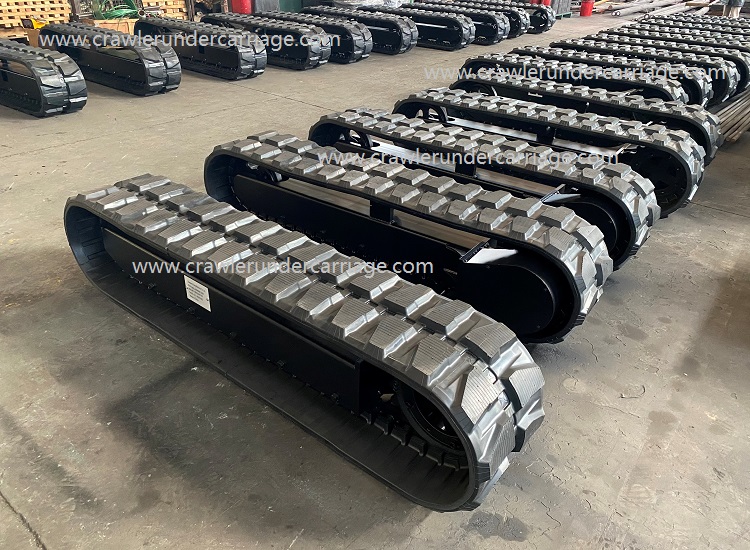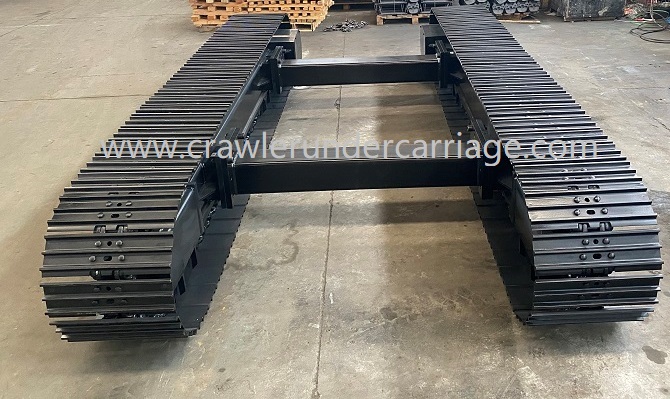It’s critical to periodically assess the state of your rubber tracks to ascertain whether replacement is necessary. The following are typical indicators that it might be time to get new rubber tracks for your vehicle:
- Wearing too much: It could be time to think about replacing the rubber tracks if they exhibit symptoms of excessive wear, such as deep or irregular tread patterns, splitting, or a noticeable loss of rubber material.
- Track tension problems: The rubber tracks may have stretched or worn out and require replacement if they are continuously loose despite correct tension adjustment or if they are unable to maintain proper tension even after correction.
- Damage or punctures: The rubber tracks’ integrity and traction may be jeopardized by any large cuts, punctures, tears, or other damage, necessitating replacement.
- Decreased traction or stability: If you see a notable decline in your equipment’s traction, stability, or general performance as a result of worn or damaged rubber tracks, it’s quite likely that new ones are required.
- Elongation or stretching: Rubber tracks may undergo this phenomenon with time, which could result in misalignment, decreased performance, and even safety concerns. In cases when elongation is substantial, replacement can be required.
- Age and usage: It’s crucial to evaluate the state of your rubber tracks and consider replacement depending on wear and tear if they have been in use for a long time and have accrued a lot of mileage or operating hours.
In the end, replacing rubber tracks should be decided after a careful examination of their state, taking into account things like wear, damage, problems with performance, and general safety concerns. Depending on your unique usage and operating conditions, speaking with a skilled equipment maintenance specialist or manufacturer can also offer helpful advice on whether to replace an item.
When should I replace my steel undercarriage
On large machinery like track loaders, excavators, and bulldozers, the choice to replace a steel undercarriage is usually made after a careful examination of the undercarriage’s constituent parts. When deciding whether to rebuild a steel substructure, keep the following elements in mind:
- Damage and Wear: Examine the tracks, rollers, idlers, sprockets, and track shoes, among other undercarriage parts, for indications of excessive wear, damage, cracks, or deformation. Additionally, pay attention to the state of the track connections and pins.
- Track Tension: Verify that the tracks’ tension is within the suggested range specified by the manufacturer. Excessively tight tracks can put stress on the undercarriage components, while loose tracks can cause wear to accelerate.
- Measure the worn parts, such as the rollers, idlers, and track links, to see if they have worn down to the manufacturer’s suggested wear limits or more.
- Excessive Movement: Check the undercarriage components for excessive up-and-down or side-to-side movement, since this may be a sign of worn bearings, bushings, or pins.
- Performance Problems: Take into account any performance problems that can indicate undercarriage wear or damage, such as increased vibration, track slippage, or trouble handling tough terrain.
- Hours of Operation: Determine how many hours the undercarriage has been used overall. Excessive use might accelerate deterioration and require replacement sooner.
- Examine the undercarriage’s maintenance history to make sure it has received regular servicing and the right kind of lubrication. Premature wear and possible damage can be caused by poor maintenance.
In the end, it’s critical to adhere to the manufacturer’s recommendations about wear limits and inspection intervals. You should also consult with certified technicians or equipment specialists who can offer knowledgeable advice on whether to repair the undercarriage. Ensuring the longevity and optimal performance of the steel undercarriage on heavy equipment can be achieved by proactive maintenance, timely replacement of worn components, and routine inspections.








